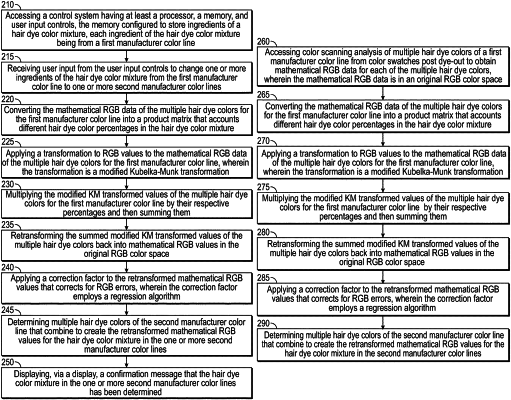| CPC A45D 44/005 (2013.01) [G05B 17/02 (2013.01)] | 25 Claims |

|
1. A method for performing hair color scanning analysis, the method comprising:
accessing a control system having at least a processor, a memory, and user input controls, the memory configured to store ingredients of a hair dye color combination, each ingredient of the hair dye color combination being from a first manufacturer color line;
scanning hair to obtain color values representing a hair color;
generating mathematical values from the obtained color values for individual hair dye colors and color component percentages in the hair dye color combination using a selected original color space in the first manufacturer color line;
applying a transformation to mathematical values of individual hair dye colors in the hair dye color combination for the first manufacturer color line, wherein the transformation is a modified Kubelka-Munk (KM) transformation;
multiplying the modified KM transformed values of the individual hair dye colors in the hair dye color combination for the first manufacturer color line by the color component percentages of the individual hair dye colors in the hair dye color combination and then summing them;
retransforming the summed modified KM transformed values of the individual hair dye colors in the hair dye color combination back into mathematical values in the selected original color space; and
determining multiple hair dye colors of a second manufacturer color line that are combined to create the retransformed mathematical values for the individual hair dye colors in the hair dye color combination.
|